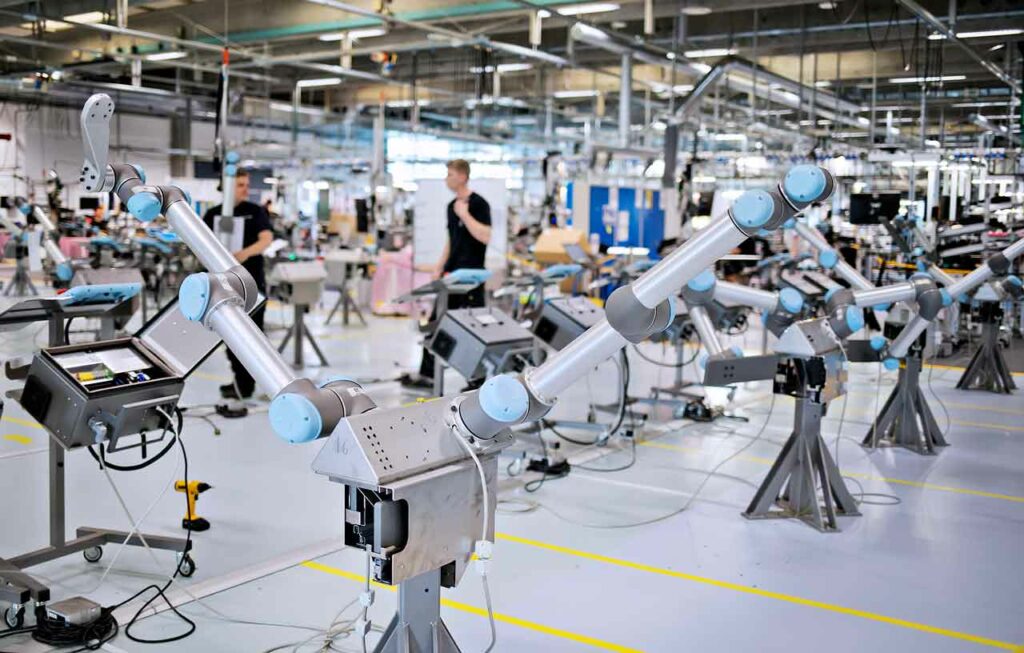Unlike in the early years, it is quite common to see factories pair up collaborative robots with CNC machines. Factory automation has led to this more. Automation with robots has advanced over the years and has led to the development of collaborative robots.
Collaborative robots or cobots are robots or robot arms that can easily work alongside humans or other robots and machines. This means that collaborative robots are one of the easiest ways to automate CNC machines.
Automation of CNC machines by collaborative robots improves its performance and enhances it in many ways.
Ability To Multitask
CNC machines are built for specific tasks. You will find a single factory with different processes with more than one CNC machine. You can have milling, drilling, or a lathing CNC machine. The CNC machine can only carry out that particular process.
When coupled with a collaborative robot, multitasking becomes possible which makes production more efficient. The collaborative robot is tending the CNC machine and will load it. As the machine carries out its work, the collaborative could start on another task.
The cobot could tend another CNC machine, check the quality of the CNC machine product or even pick and place it elsewhere. Making production fast and efficient.
Collaboration With Other CNC Machines
Collaborative robots enable CNC robotics collaboration in the factory. With the introduction of a collaborative robot into CNC machine operations, it becomes possible for CNC machines to collaborate.
A single collaborative robot can easily handle 3 or 4 CNC machines. It can load them, each at its own time, and even unload them when their processes are complete. When unloaded, the cobot can check the quality of their products. It can also pick and place the products where they need to go and start the process again.
This makes it possible for the CNC machines to work together rather than waiting for each other. Thus improving the production capacity of the factory and the capability of the machines.
Collaborative Robots Enhance The Safety Of CNC Machines
Before a factory automates CNC machine processes, the CNC machine is tended to by human workers. Like other machines in the factory, a human worker is likely to get an injury or an accident when working with it. There are some CNC machine processes such as lathing that are risky and prone to accidents such as lathing.
With the introduction of collaborative robots to tend to the CNC machine, the machine becomes safer to use. Robots cannot get injured by other machines. The programming of robots also ensures that the likelihood of an accident between the two machines is eliminated.
The programming of both machines ensures that their collaboration is smooth and that accidents between the two are unlikely to happen. With the elimination of human interaction, the factory and the CNC machine are now safer for any human employees.
Enhances Production
CNC machines are workhorses. In many factories that don’t have automation, CNC machines have tenders who run them in shifts. This ensures that they keep working for as long as possible to enhance production.
Unlike human workers, robots are mechanical. They can work for as long as they are programmed to. Coupling a cobot with a CNC machine thus has the same effect on the machine.
The factory no longer needs people working in shifts to keep the CNC machine productive. A cobot will tend to it effectively. It will load and offload it, change its tooling if need be, and even supervise the quality of its product without the need to stop its functioning.
Conclusion
Automation with collaborative robots can transform production processes in factories. Collaborative robots work well with human colleagues and with other collaborative robots and machines. The CNC machine is one of the most common industrial machines that is improved by the collaboration with cobots. It makes it more productive, safer, and profitable for the factory.
